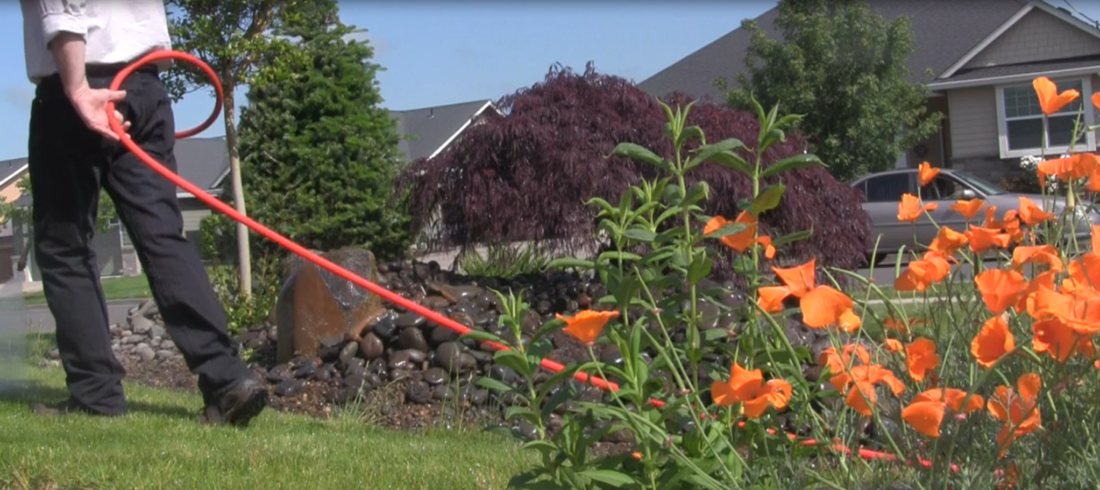The problem is that too many of us use synthetic fertilizers and pesticides in managing our lawns, gardens, trees, and shrubs. Often, we don’t even know we’re doing it. Whether we’re aware or not, the runoff goes into the water table, causes algae bloom, depletes fish populations, and the damage spirals.
It’s something that David Nystrom is passionate about.
He put his long-time concern into action last year and started a biological soil management and compost tea spray service, Way to Gro, for residential and commercial customers.
He and his crew of three offer an environmentally safe way for home owners to improve their lawns.

“There’s so many reasons why areas of your yard get out of balance,” he says. “How can you tell if you’re getting the right nutrients to the right plants? Different areas have different needs. Trees, for example, have nutritional requirements totally different from gardens, shrubs, and lawns.”
Some compost ingredients are great for one plant and not for others. But how does one tell?
That’s where Way to Gro steps in.
“Because of all the variables there is a real need for the service we provide,” he says.
His first step is to come out to your home and measure soil health using laboratory analysis. He’ll determine specifically why that patch of trees in your yard seems to be dying, or a particular line of shrubs is not doing well. Or whatever the greenery issue may be.
“We find out what’s going on in the soil with solid, upfront analysis,” he explains. “There’s different needs for different situations.”
A case in point is trees. They require a lot of fungi over bacteria. But it’s the other way around for lawns. “So if we find a lot of bacteria around your sick trees, we need to put back the fungi element. It’s all about providing what each needs and then maintaining the balance.”
He and his crew restore that balance with monthly compost tea applications, concocting a brew that addresses each situation.
“Our goal is to become aware of your garden’s biological profile, then keep it balanced and effective,” Nystrom emphasizes.
Way to Gro will do a deep root injection to a tree, if needed, with a piece of equipment that works with the spray rig to inject compost tea directly around the roots of the tree. Then, there might be a ground application, “because there’s biology going on there, too,” Nystrom adds.
Each spring and fall the company retests the soil to chart re-balancing progress.
Good results become evident as the months go on. Compaction typically goes away and roots start growing again. Earthworms come back and the whole ecosystem becomes alive and vibrant.
“The norm is about a year,” Nystrom explains. “Then we back off and go from monthly to bimonthly, then quarterly, and, hopefully, to the point where we just do those biological soil checks in spring and fall and things naturally stay balanced, maybe with a little help here and there.”
Soil starters
For those who want to delve into the complex mysteries of soil health and soil biology, here’s some good starters.
Go online to the USDA’s Natural Resources Conservation Service site. Its homepage (see left hand vertical panel) is chock-full of great information, written in understandable language. A terrific bonus is the 34-page free download soil biology primer.
Try the author of the USDA soil biology primer, Dr. Elaine Ingham. Go to her website at soilfoodweb.com. Ingham, a soil microbiologist, was previously on the faculty at Oregon State University. She’s known for her pioneering research (that she started here in Oregon) on this complicated subject.
Call the Oregon State University Extension Service in Lane County, 541/344-5859, and speak to a master gardener about any issues or questions you may have on soil management. Ross Penhallegon, horticulturist at the OSU Extension Service, advises that the subjects of compost and compost tea can solicit a lot of different opinions. “There’s so many pieces to the puzzle,” he cautions.


